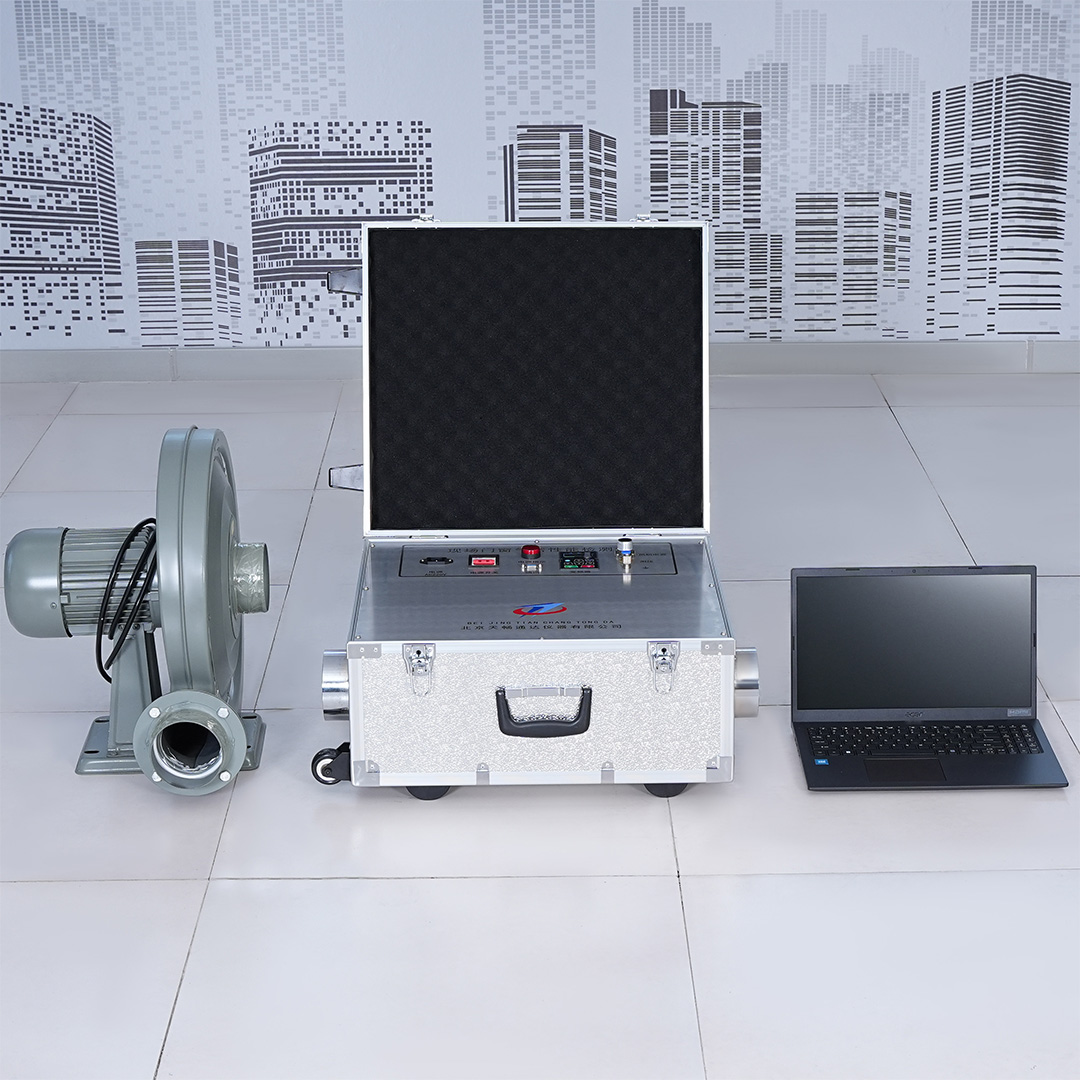On site airtightness performance testing instrument for building doors and windows

PIC-(On site airtightness performance testing instrument for building doors and windows)
1、 Product Introduction

The on-site airtightness performance tester for building doors and windows is a device specifically designed to test the airtightness performance of building doors and windows. This instrument usually consists of a differential pressure sensor, control system, data acquisition system, etc., with a compact and portable appearance design that can meet the needs of on-site testing. Its core values and characteristics are mainly reflected in the following aspects:
Accurate measurement: The instrument adopts high-precision pressure difference sensors, which can accurately measure the pressure difference inside and outside doors and windows, thereby evaluating the airtightness performance of doors and windows.
Convenient operation: The instrument is equipped with a user-friendly interface and control system, making the testing process simple and easy to understand, and operators can quickly get started.
Real time data collection and analysis: The detector can collect test data in real time and process it through built-in data analysis software to quickly provide test results.
High adaptability: This detector is suitable for different types of doors and windows, including wood, aluminum alloy, plastic steel and other materials, and can meet diverse testing needs.
Efficient and energy-saving: The instrument adopts advanced energy-saving technology, which can reduce energy consumption while ensuring testing accuracy. In terms of working principle, the on-site airtightness performance testing instrument for building doors and windows is mainly based on pressure difference measurement technology. During testing, the detector connects the inner and outer sides of the doors and windows through a pipeline to measure the air pressure difference when the doors and windows are closed. Based on the measurement results, the airtightness performance of doors and windows can be evaluated. If the air pressure difference remains stable and small, it indicates that the airtightness performance of doors and windows is good.
\
2、 Instrument technical parameters
1. Wind pressure test range: -200~200Pa, accuracy: 0.5%
2. Wind pressure control index: accurate to 1Pa
3. Air flow test range: 2-398m3/h, accuracy: 2.5 level
4. Equipment power consumption: By using variable frequency speed regulation technology, the power can vary within the range of 5W to 750W
5. Power distribution: AC 220V 750W 50Hz
6. External dimensions of control box: length x width x height 520 x 470 x 250 (mm)
3、 The instrument meets the standards
The design and manufacturing of on-site airtightness performance testers for building doors and windows usually comply with a series of national and international standards, such as:
GB/T 7106-2022 "Classification and Testing Methods for Air tightness, Water tightness, and Wind Pressure Resistance of Building External Windows"
ISO/IEC 17025 (General requirements for the competence of testing and calibration laboratories)
In addition, it may also comply with the standards and regulations of other specific countries or regions.
4、 Application field
This detector is widely used in the following fields:
Construction engineering: During the installation process of the building, conduct airtightness tests on doors and windows to ensure energy efficiency and comfort of the building.
Quality supervision: The quality inspection department uses this instrument to conduct quality inspections on door and window products in the market, ensuring that the products meet relevant standards.
Product development: Door and window manufacturing enterprises use this instrument for testing during the product development stage, which helps optimize product design and improve product quality.
Energy conservation and emission reduction: Testing the airtightness of doors and windows can help evaluate the energy consumption of buildings and provide data support for energy conservation and emission reduction.
5、 Scope of application and limitations
Applicable scope:
Suitable for testing the airtightness performance of various types and specifications of doors and windows.
Can be used for performance testing of doors and windows in new and existing buildings.
Suitable for indoor and outdoor environments.

Limitations:
The testing environment should be relatively stable, avoiding interference factors such as strong winds and strong air currents.
The test doors and windows should be installed correctly and in a closed state.
Operators need to undergo professional training to ensure correct and safe use of instruments.
The instrument should be regularly calibrated and maintained to ensure testing accuracy and instrument lifespan.
Overall, the on-site airtightness performance tester for building doors and windows is an efficient, accurate, and easy to operate testing equipment, which is of great significance in ensuring the airtightness performance of building doors and windows. Its wide range of applications and flexible adaptability make it an indispensable detection tool in the construction industry.





















